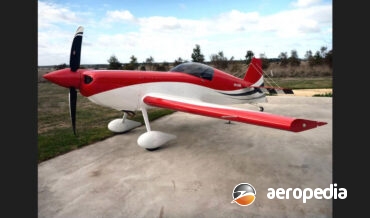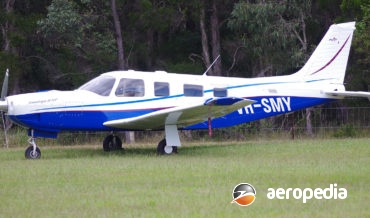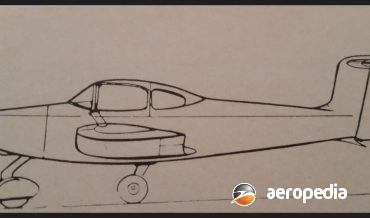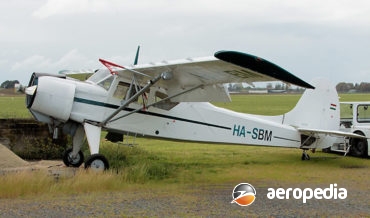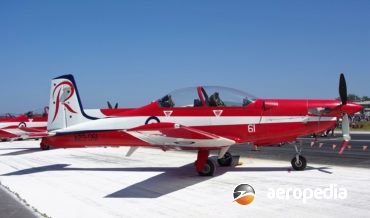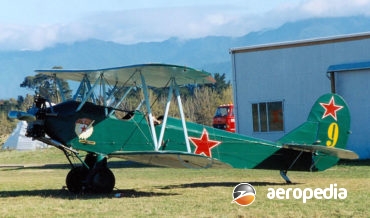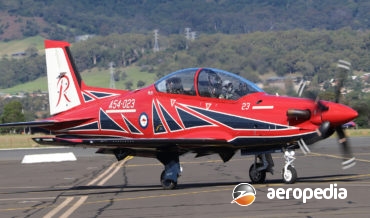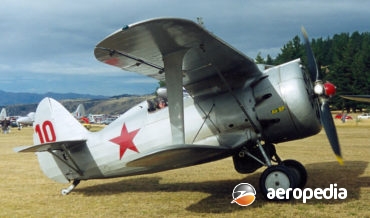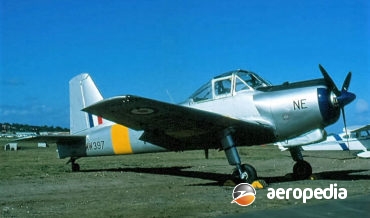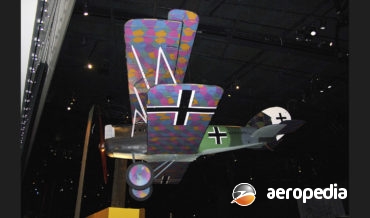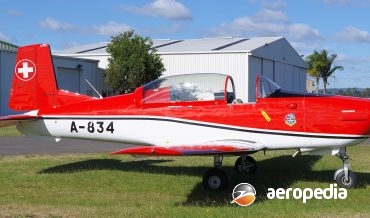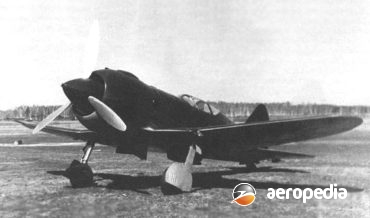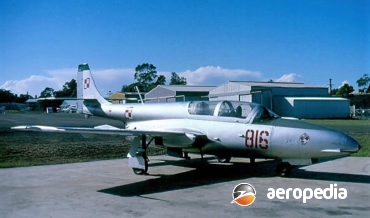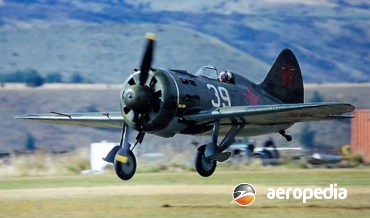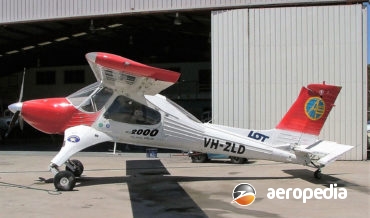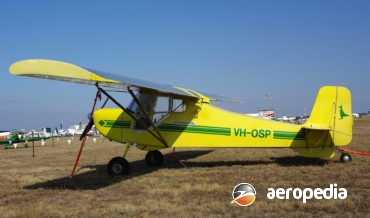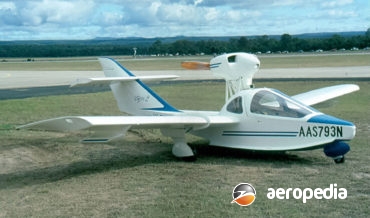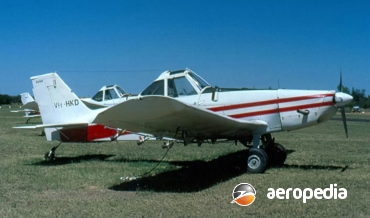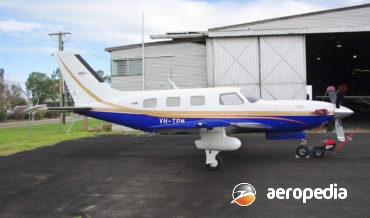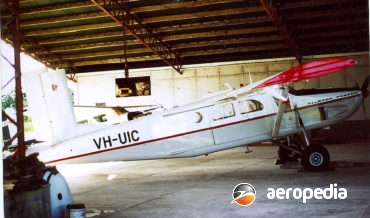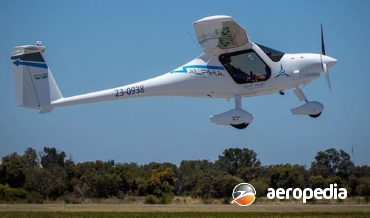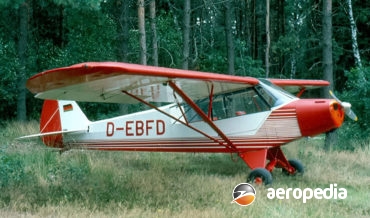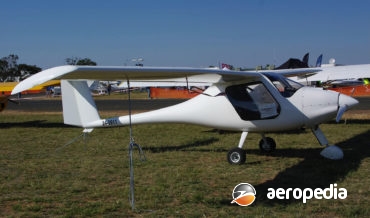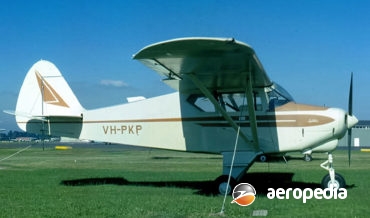All Contents
Contents
Specifications: Max speed on land: 120 km/h (75 mph) Max speed in the air: 160 km/h (99 mph) Fuel capacity: 60 litres (13 Imp gals) Max range: 420 kms (261 miles) Max flying altitude: 1,800 ms (5,900 ft)/li> Payload: 101 kgs (227 lbs) Loaded weight: 265 kgs (584 lbs) History:
David C. Eyre
- October 4, 2023
This was an aircraft said to be built by Frank Peacock at Burwood, NSW in 1914. It was powered by a 21-kw (28-hp) engine but very little more is known about it and no record of a successful flight has been found.
David C. Eyre
- May 25, 2020
Light homebuilt constructed in the Broken Hill / Ivanhoe, NSW area in the 1930s. Of similar appearance to a Comper Swift, it was fitted with a small radial engine, possibly a seven-cylinder Pobjoy or Siemens unit.
David C. Eyre
- May 25, 2020
The Cygnet was a minimum ultra-light aircraft built in the 1970s. It was built of 4130 aluminium welded frame, had a high wing and an engine in a pusher configuration behind the pilot.
David C. Eyre
- May 25, 2020
In mid 1926 Mr Edwin Prosser of Rockhampton, Qld enquired of the Comptroller of Civil Aviation if it was necessary to obtain a Certificate of Airworthiness for a light aircraft, indicating he was building a monoplane.
David C. Eyre
- May 25, 2020
Little is known about this one-off aircraft but it was registered with the RAA as 19-4671 (c/n 60001) on 6 December 2000 and was withdrawn from service on 7 May 2011.
David C. Eyre
- May 25, 2020
The PP-108 is a single-seat high-performance low-wing monoplane designed and built by Peter Prendergast of Ocean Grove Vic for high-performance aerobatics. It received its C of A on 11 March 2016 and was first registered on 29 February 2016 as VH-XSK (c/n 0015).
David C. Eyre
- May 25, 2020
The Maya Ultralight was a single-seat ultralight aircraft aircraft with an enclosed cabin and powered by a 21-kw (28-hp) Konig SD-570 four-cylinder engine with an adjustable propeller.
David C. Eyre
- May 25, 2020
In 1909 Messrs John Pechugin, a mechanical engineer and draftsman, and Henry Little, a foreman boilermaker, designed and built an aeroplane and are reported to have conducted secret trials of this aircraft on the Basic Reserve in Wellington.
David C. Eyre
- May 25, 2020
The Saratoga was introduced to the Piper range in 1980 and was the culmination of years of development of the PA-32 series through from the PA-32-260 Cherokee Six, which first appeared in 1965 and was in production for 14 years before being replaced by the PA-32R-300 Lance, which was a
David C. Eyre
- March 23, 2020
In late 1957 the Royal Queensland Aero Club (RQAC) announced that at its instigation preliminary design work had begun
on a four-seat fully-aerobatic monoplane known as the PL-9, and that it was to be constructed at the Aero Clubs workshops at
Archerfield, Qld.
David C. Eyre
- March 23, 2020
The PZL 101 Gawron is a single engine rugged utility aircraft which was built in some numbers in Poland for the Eastern Europe market, being produced by WSK-Okecie, this company later becoming known as PZL Warszawa-Okecia and is a development of the Soviet-built Yakovlev Yak 12M.
David C. Eyre
- March 23, 2020
Following the interest, and some success, with Triplanes by other manufacturers in Europe, Pfalz developed the Dr.1 Triplane, the prototype of which was powered by a 119 kw (160-hp) Siemens Halske Sh III geared rotary engine.
David C. Eyre
- May 19, 2019
The PC-9 was a development of the very successful PC-7 Turbo-Trainer, the latter having the flat-rated 410 kw (550 shp) PT6A-25 engine and the PC-9 having the PT6A-62, flat-rated at 709 kw (950 shp) for take-off.
David C. Eyre
- May 19, 2019
Considered by many to be one of the, if not the, most produced aircraft of all time, with estimates of aircraft completed ranging from 30,000 to 40,000, the Polikarpov PO-2, also known as the U-2, primary trainer biplane flew for the first time on 7 January 1928.
David C. Eyre
- May 19, 2019
Since the 1970s Pilatus Aircraft at Stans in Switzerland has been involved in the design and development of turboprop-power trainers for air forces, resulting in the PC-7, PC-9, and later the PC-21
David C. Eyre
- May 19, 2019
The fastest biplane ever to see operational service, the I-153 made its operational debut during the Spanish Civil War, during which it became known as the Chaika (Gull).
David C. Eyre
- May 19, 2019
The Provost replaced the Percival Prentice in service in 1953 as the basic training aircraft for the Royal Air Force.
David C. Eyre
- May 19, 2019
The Pfalz D.XI appeared at the June 1918 German fighter trials at Adlershof and was shown in two models, one with a Mercedes D.IIIa engine and the other with a BMW III engine.
David C. Eyre
- May 19, 2019
Pilatus Flugzeugwerke based at Stans. was established on 16 December 1939 to produce aircraft and one of its designs was the P-3 tandem two-seat trainer (HB-HON) first flown on 3 September 1953.
David C. Eyre
- May 19, 2019
Based on the I-180 series, the I-185 was designed in 1940, which itself was developed from the I-16 but was virtually a new design.
David C. Eyre
- May 19, 2019
In the late fifties design and development took place in Poland, Czechoslovakia and the USSR of a series of two-seat military trainers to meet a common requirement, the proposal being that the best design of the three (TS-1 Iskra, L-29 Delfin and Yak 30) would be chosen for use by
David C. Eyre
- May 19, 2019
The I-16 (known as the Ishak or Rata) was designed by a team headed by Nikolai Polikarpov and was flown for the first time on 31 December 1933 fitted with a 336 kw (450-hp) M-22 engine (licence built Bristol Jupiter) and achieved a max speed of 360 km/h (224 mph).
David C. Eyre
- May 19, 2019
The Plalz D.III or Scout was built by the Pfalz Flugzeug Werke on the Rhine River and designed by Rudolfo Gehringer following the completion of orders for the E-type monoplanes.
David C. Eyre
- May 19, 2019
The PZL-102 Kos (Blackbird) was designed and developed by Polskie Zakladey Lotnicze (PZL), the prototype powered by a 48-kw (65-hp) Narkiewicz four-cylinder horizontally-opposed air-cooled engine flying for the first time on 21 May 1958.
David C. Eyre
- May 8, 2019
PZL was founded in 1928 and has been involved in the construction of aeroplanes for many years.
David C. Eyre
- May 8, 2019
The Sassy is marketed by Protech Aircraft Inc in Houston, Texas, and is a simple-to-build two-seat side-by-side amateur built aircraft with STOL performance.
David C. Eyre
- May 8, 2019
The Osprey was designed as a light two-seat amphibian for the amateur constructor, to be operated from smooth, enclosed areas of water and not from the open sea, for which most amphibian are designed.
David C. Eyre
- May 8, 2019
The PA-36 series of agricultural monoplanes appeared in 1971.
David C. Eyre
- May 8, 2019
Derived from the Piaggio P-136-L2 amphibian, and employing a similar gull wing and pusher engine installation, the prototype P-166 was flown for the first time on 26 November 1957.
David C. Eyre
- May 8, 2019
The Malibu was introduced to the range of single-engine aircraft produced by the Piper company in August 1982 as a competitor for the very successful Cessna P210 Centurion series which, up to that time, was the only pressurised single-engine cabin monoplane available on the market.
David C. Eyre
- May 8, 2019
In 1923 Mr. Bernard Pietenpol built a Ford Model T powered biplane and in 1928 he built and flew the prototype of the Aircamper.
David C. Eyre
- May 8, 2019
The Malibu Meridian was launched in 1997 at the National Business Aviation Association Convention in Dallas, Texas when a fuselage mockup was displayed.
David C. Eyre
- May 8, 2019
Pilatus Flugzeugwerke was formed in December 1939 under the leadership of M E Buehrle, the Swiss industrialist and owner of the Oerlikon company.
David C. Eyre
- May 8, 2019
The Alpha Electro is one of the first of a new generation of light training aircraft powered by electric motors and has been developed by Pipistrel, which is based in Slovenia’s Vipava Valley.
David C. Eyre
- May 8, 2019
The J-5 Cruiser was a logical development of the earlier and very popular J-3 and J-4 series, designed to provide accommodation for three persons in lieu of two, this being achieved by a modest expansion of the fuselage width
David C. Eyre
- May 8, 2019
The Virus and Sinus light powered gliders are members of a family of aircraft produced to meet world ultra-light regulations and which are produced in volume by Pipistrel in Slovenia for the world market.
David C. Eyre
- May 8, 2019
The Piper Aircraft Corp in 1947 re-organised its operating procedures and worked towards introducing a new model, the two-seat side-by-side PA-15 Vagabond powered by a 48-kw (65-hp) Lycoming O-145 engine.
David C. Eyre
- May 8, 2019
As would be expected, the S-2 was a natural two-seat development of the very popular single-seat S-1 series.
David C. Eyre
- May 8, 2019
The Piper Colt was designed by the Piper Aircraft Corporation as a cheap ‘everymans aeroplane’ to sell in the United States for below $5,000 in the early 1960s.
David C. Eyre
- May 8, 2019
Recent Comments
Archives
Categories
- No categories
Categories
- No categories
Latest Posts
Newsletter


